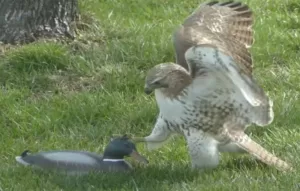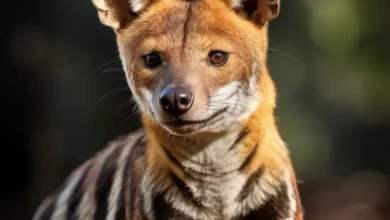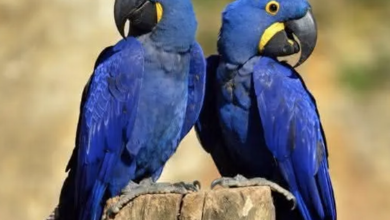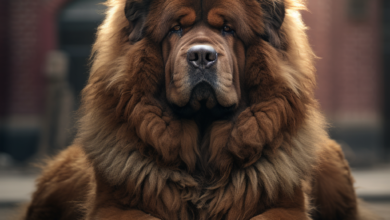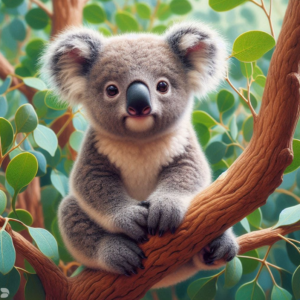
Koalas are iconic marsupials native to Australia, known for their cuddly appearance, eucalyptus leaf diet, and unique pouch where they raise their young. These arboreal creatures spend most of their time in trees, munching on leaves and sleeping for up to 20 hours a day. Despite their laid-back lifestyle, koalas face numerous threats, including habitat loss, chlamydia, and bushfires. Conservation efforts are underway to protect these beloved animals and ensure their survival in the wild.
Physical Characteristics
Koalas are well-adapted for their arboreal lifestyle. Their thick fur, typically gray with white underbellies, provides insulation in both hot and cold weather. Their strong claws and opposable thumbs allow them to grip branches securely as they climb and maneuver through trees. Koalas have large, furry ears and a keen sense of smell, helping them detect predators and locate food sources. Their large, black noses are sensitive to eucalyptus leaves, which are their primary food source.
Diet and Digestion
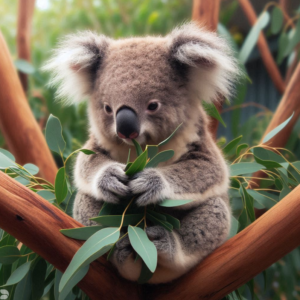
Koalas are herbivores, with their diet consisting almost exclusively of eucalyptus leaves. These leaves are toxic to most animals, but koalas have a specialized digestive system that allows them to break down the toxins and extract nutrients. Their unique gut flora, consisting of billions of bacteria, plays a crucial role in this process. Koalas consume a large amount of leaves, up to 1.2 kilograms (2.6 pounds) per day, to meet their energy needs.
Reproduction and Life Cycle
Koalas are marsupials, meaning they give birth to live young but carry them in a pouch until they are fully developed. Female koalas reach sexual maturity around 2-3 years of age, while males mature slightly later at 3-4 years. The breeding season typically occurs in the summer months. After a short gestation period of about 35 days, a single joey is born. The tiny joey, weighing just 0.5 grams (0.02 ounces), crawls into the mother’s pouch and attaches to her nipple.
The Joey’s Development
Inside the pouch, the joey nurses for around 6 months, gradually growing and developing. At this stage, it starts to venture out of the pouch, exploring its surroundings and learning to climb trees. By the time it is 12 months old, the joey is fully weaned and independent. Koalas typically reach adulthood around 3-4 years of age and have a lifespan of about 10-15 years in the wild.
Habitat and Distribution
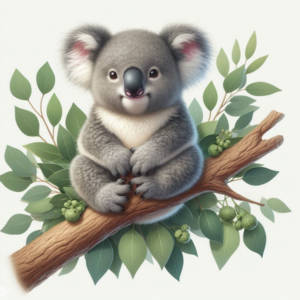
Koalas are found in open eucalypt forests and woodlands along the eastern and southeastern coasts of Australia. They prefer areas with tall, mature eucalypt trees, which provide them with food, shelter, and protection from predators. Koalas are solitary animals, with each individual occupying its own home range. However, they do overlap in their territories and may interact with each other, especially during the breeding season.
Threats to Koala Conservation
Koalas face several threats to their survival, including:
-
Habitat Loss: Deforestation and land clearing for agriculture and urban development have significantly reduced koala habitat, fragmenting populations and making it harder for them to find food and shelter.
-
Chlamydia: Chlamydia is a bacterial disease that can cause infertility, blindness, and even death in koalas. It is transmitted through contact with infected animals or their urine.
-
Bushfires: Bushfires, which have become more frequent and intense due to climate change, can devastate koala habitat and directly harm koalas.
Conservation Efforts
Conservation efforts are underway to protect koalas and address the threats they face. These efforts include:
-
Habitat Protection: Establishing protected areas and restoring koala habitat are crucial for ensuring the long-term survival of the species.
-
Chlamydia Research and Treatment: Researchers are working to develop effective treatments and vaccines for chlamydia, which could help reduce the disease’s impact on koala populations.
-
Bushfire Management: Implementing better fire management practices and raising awareness about the risks of bushfires can help protect koalas from these devastating events.
Conclusion
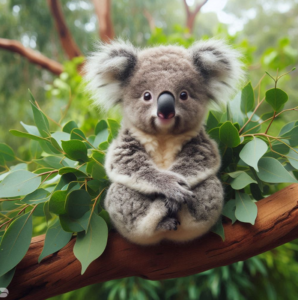
Koalas are a beloved symbol of Australia’s unique wildlife. Their conservation is essential for maintaining a healthy ecosystem and preserving a piece of Australia’s natural heritage. By supporting conservation efforts and raising awareness about the threats koalas face, we can help ensure that these adorable marsupials continue to thrive in their natural habitat for generations to come.
